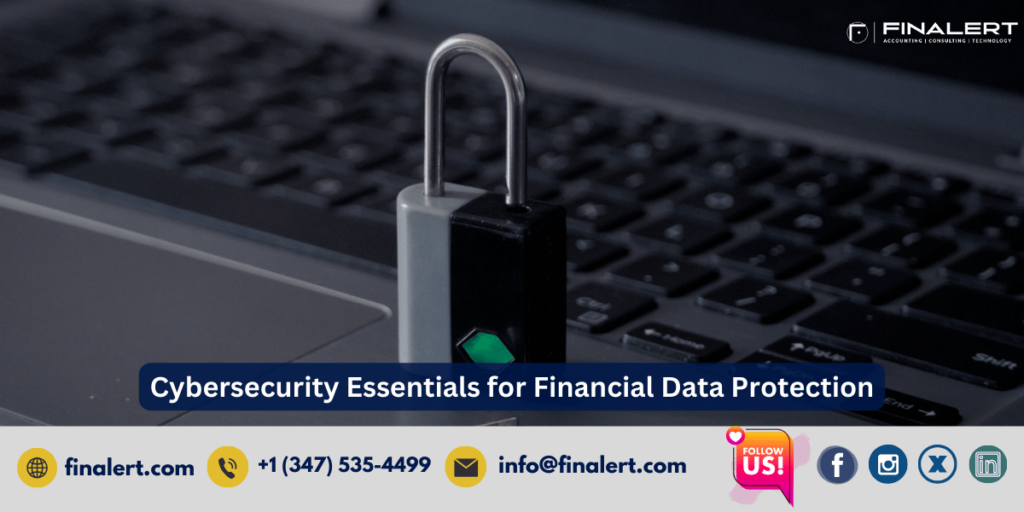
In today’s interconnected digital landscape, financial data is one of the most valuable assets for businesses and individuals alike. However, as the importance of financial data grows, so does the risk of cyber threats. From phishing attacks to sophisticated ransomware, the methods used by cybercriminals to exploit vulnerabilities continue to evolve. Therefore, understanding and implementing cybersecurity essentials for financial data protection is not just a good practice—it is a necessity.
Financial data encompasses sensitive information such as bank account details, credit card numbers, tax records, and investment portfolios. Unauthorized access to this data can lead to:
Understanding the types of cyber threats is the first step toward mitigating them. Some of the most common threats to financial data include:
Phishing involves deceptive emails or messages designed to trick individuals into revealing sensitive information. Financial institutions are prime targets for these attacks.
Ransomware encrypts data, rendering it inaccessible until a ransom is paid. Businesses holding critical financial data are often targeted.
Hackers exploit vulnerabilities in systems to access large volumes of financial data. Such breaches can compromise customer trust and lead to significant financial losses.
Disgruntled employees or contractors with access to financial systems may misuse their privileges to steal or expose data.
In a MITM attack, a hacker intercepts communication between two parties to steal sensitive data, such as login credentials or payment information.
To safeguard financial data, businesses and individuals must adopt comprehensive cybersecurity measures. Below are essential strategies for protecting sensitive information:
Passwords serve as the first line of defense against unauthorized access. To enhance password security:
MFA adds an extra layer of security by requiring users to verify their identity through two or more factors, such as a password and a one-time code sent to their mobile device.
Encryption ensures that even if data is intercepted, it cannot be read without the encryption key. Use advanced encryption standards (AES) for protecting sensitive financial records.
Outdated software is a common entry point for cyberattacks. Ensure all applications, operating systems, and firmware are updated with the latest security patches.
Regular audits help identify vulnerabilities in financial systems. Penetration testing and vulnerability assessments can uncover weaknesses before attackers exploit them.
Human error is a leading cause of data breaches. Regular training sessions on identifying phishing attempts, secure data handling, and other cybersecurity practices are critical.
Implement role-based access controls to ensure employees can only access the data they need to perform their duties. This reduces the risk of insider threats.
Regularly back up financial data to secure, offsite locations. This ensures that data can be restored in the event of a ransomware attack or system failure.
For e-commerce and online transactions, utilize trusted payment gateways with robust security measures such as tokenization and fraud detection.
Implement tools to monitor and analyze network activity in real-time. Anomalous behavior can indicate a potential breach and allow for swift action.
Governments and regulatory bodies have introduced stringent data protection laws to ensure financial data security. Key regulations include:
GDPR mandates strict data protection measures for businesses operating in the EU or handling EU citizens’ data.
PCI DSS outlines specific requirements for businesses handling credit card transactions, including encryption and regular vulnerability scans.
SOX imposes financial data protection obligations on publicly traded companies in the United States.
CCPA enhances data privacy rights for California residents, including the right to know how financial data is used and shared.
Compliance with these regulations not only ensures data security but also builds trust among clients and stakeholders.
As cyber threats evolve, so do the technologies designed to counter them. Emerging solutions for financial data protection include:
AI-driven tools can detect anomalies, predict potential threats, and automate responses to cyberattacks.
Blockchain’s decentralized and immutable nature makes it an excellent tool for secure financial transactions and data storage.
This security model assumes that threats can originate both inside and outside the network. Zero Trust enforces strict access controls and continuous monitoring.
Biometric methods, such as fingerprint and facial recognition, provide a secure and convenient alternative to traditional passwords.
One of the most significant breaches in history, Equifax exposed the financial data of 147 million individuals due to unpatched software vulnerabilities.
A misconfigured firewall allowed a hacker to access over 100 million credit card applications and accounts.
Hackers infiltrated Target’s payment system, stealing credit card information from 40 million customers.
Protecting financial data is a critical responsibility for businesses and individuals in today’s digital age. By understanding common threats, implementing best practices, and staying compliant with regulatory standards, organizations can safeguard their sensitive information against cyberattacks.
Finalert, headquartered in New York, NY, with branches in Ohio and Wyoming, specializes in providing comprehensive solutions for financial data protection. With a team of dedicated experts and cutting-edge technologies, we help businesses navigate the complexities of cybersecurity. Contact us today to learn how we can fortify your financial systems and ensure peace of mind.
Similar Articles
No results available
Get in touch with Finalert today for tailored business solutions!
No results available
Ready to thrive? Connect with Finalert today and let’s succeed together in the dynamic global market.
© 2025 Finalert. All rights reserved.
Ready to thrive in the dynamic global market? Finalert LLC offers expert financial services, including accounting, consulting, and technology solutions, tailored to your business needs.
Address
Accounting
Quick Links
Consulting
Industries
© 2025 Finalert LLC. All rights reserved.